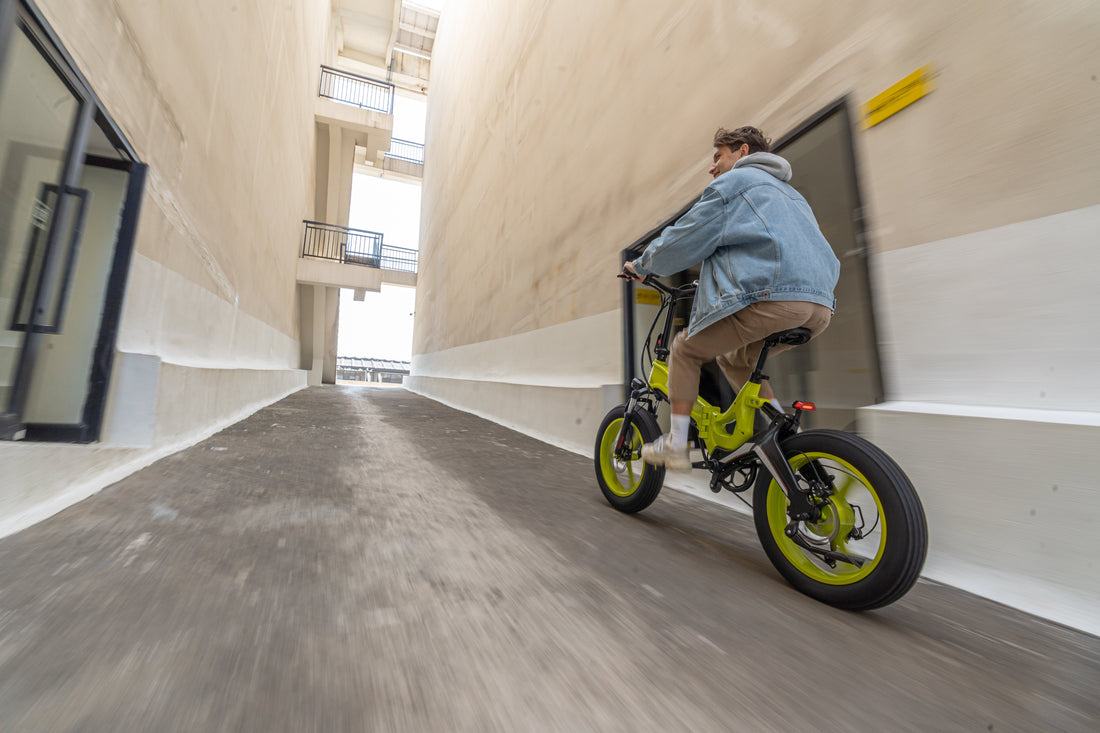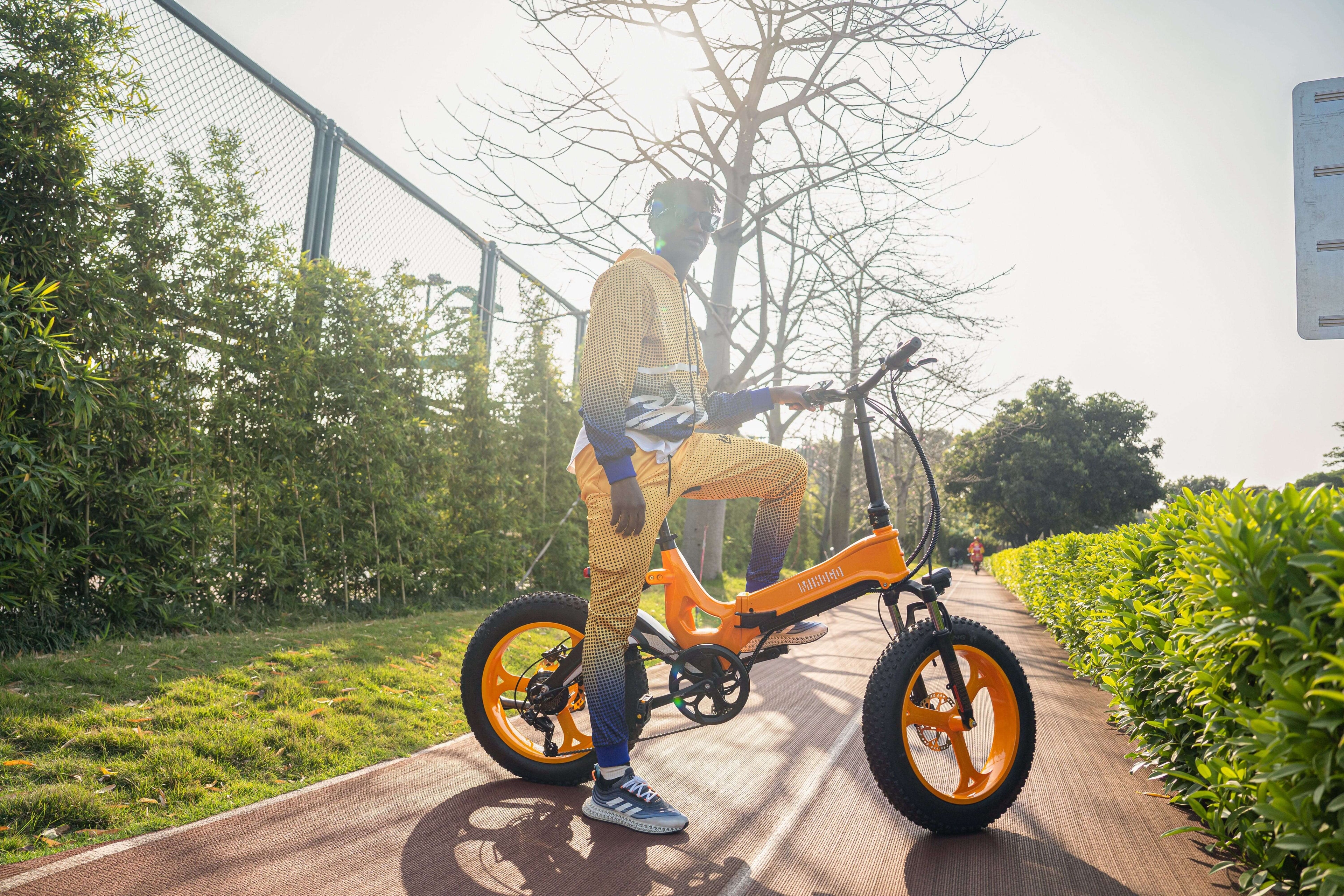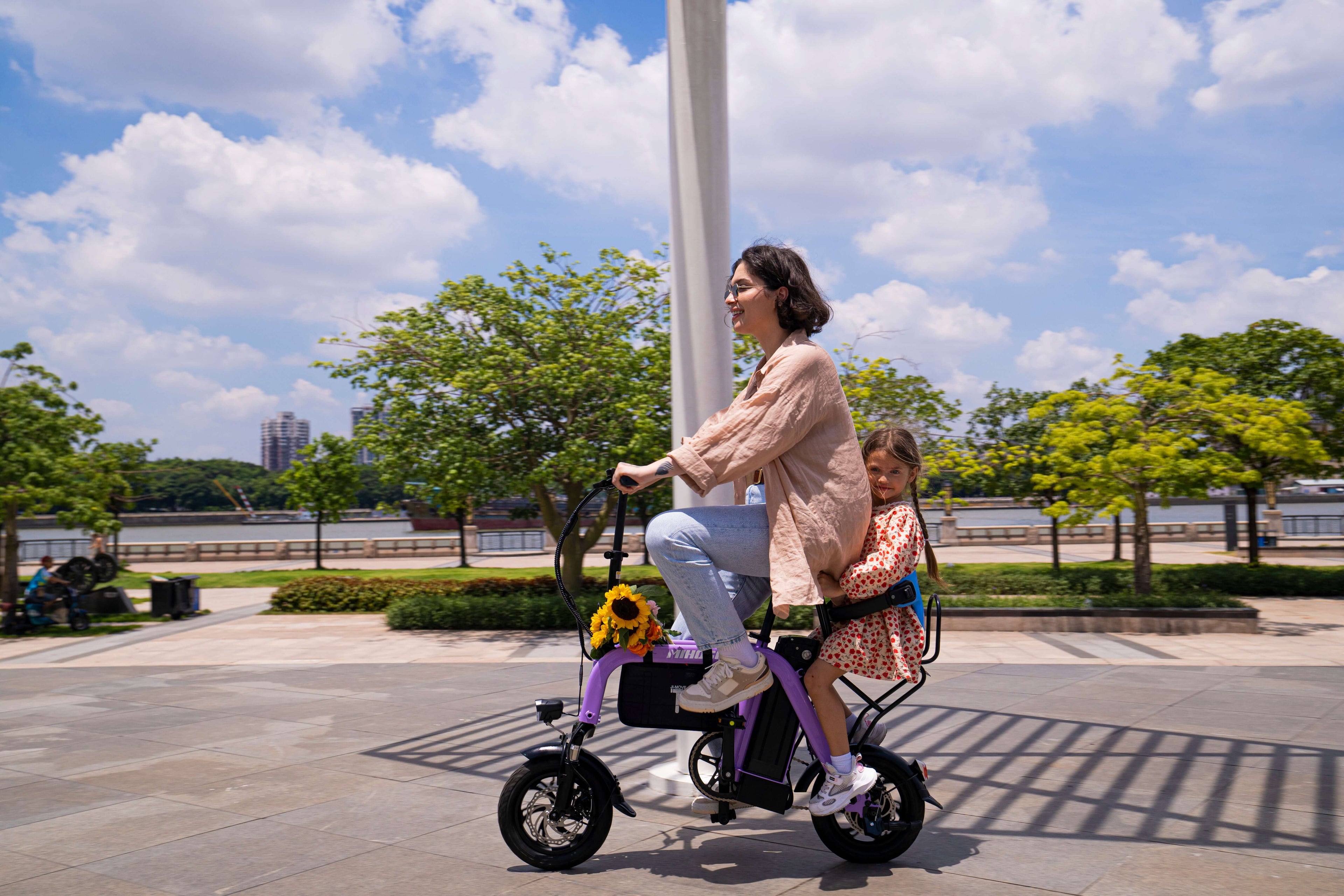Electric bike motor technology represents the heart of your riding experience, determining everything from hill-climbing capability to energy efficiency. Whether you're conquering mountain trails or navigating urban terrain, understanding the fundamental differences between mid-drive and hub motor systems empowers you to choose the perfect Mihogo e-bike for your specific needs.
The choice between mid-drive and hub motors isn't just about technical specifications—it's about matching motor characteristics to your riding style, terrain challenges, and performance expectations. This comprehensive guide explores how each motor type delivers power, handles different terrains, and influences your overall e-bike experience.
Understanding Electric Motor Fundamentals
The Science Behind E-Bike Motor Technology
Modern e-bike motors utilize brushless DC (BLDC) technology, which offers high efficiency rates of 85-90% compared to traditional brushed motors at 75-80%. Brushless DC motors provide superior power-to-weight ratios, instantaneous torque control, and extended lifespan through elimination of mechanical brush friction.
Key Motor Performance Metrics:
Power (Watts): Determines maximum speed and overall capability
- 350W-500W: Suitable for flat terrain and light assistance
- 750W: Optimal for hill climbing and varied terrain
- 1000W+: High-performance applications (check local regulations)
Torque (Newton-meters): Defines rotational force and climbing ability
- 40-60Nm: Basic assistance for flat riding
- 80Nm+: Serious hill climbing capability
- 100Nm+: Premium performance for steep terrain
Efficiency Rating: Percentage of electrical energy converted to mechanical power
- Modern hub motors: 80-85% efficiency
- Advanced mid-drive systems: 85-90% efficiency
Motor Placement and Its Impact on Performance
Motor placement fundamentally affects weight distribution, handling characteristics, and power delivery efficiency. Central motor placement (mid-drive) offers better weight balance, while wheel-based placement (hub motors) provides simpler integration and maintenance.
Hub Motor Technology: Direct Power Delivery
How Hub Motors Work
Hub motors integrate directly into the wheel hub, delivering power through direct wheel rotation. This direct-drive approach eliminates complex drivetrain interactions, creating a simpler, more reliable system for many riding applications.
Hub Motor Advantages:
- Simple installation and maintenance
- Lower initial cost
- Quiet operation
- Independent of bike gearing
- Immediate throttle response
- Minimal drivetrain wear
Hub Motor Limitations:
- Reduced efficiency on steep hills
- Fixed gear ratio limitations
- Unsprung weight affects handling
- Wheel replacement complexity
- Less natural pedaling feel
Hub Motor Performance Characteristics
Hub motors excel in consistent power delivery across flat terrain, making them ideal for urban commuting and recreational riding. The direct power application provides predictable assistance levels and simplified control systems.
Optimal Hub Motor Applications:
- Urban commuting on moderate terrain
- Recreational riding on bike paths
- Beach cruising and casual cycling
- Budget-conscious riders seeking reliability
- Riders prioritizing low maintenance
Mid-Drive Motor Technology: Integrated Power Systems
How Mid-Drive Motors Work
Mid-drive motors mount at the bike's bottom bracket, applying power directly to the crankset and utilizing the bike's existing gears. This integration allows the motor to leverage mechanical advantage through gear ratios, dramatically improving efficiency and performance on varied terrain.
Mid-Drive Motor Advantages:
- Superior hill climbing through gear utilization
- Better weight distribution and balance
- Higher overall system efficiency
- Natural pedaling feel
- Optimal power delivery across speed ranges
- Enhanced bike handling characteristics
Mid-Drive Motor Limitations:
- Higher initial cost
- More complex maintenance requirements
- Increased drivetrain wear
- Potential noise under high load
- Requires proper gear shifting technique
Mid-Drive Performance Characteristics
Mid-drive motors deliver power through the bike's drivetrain, enabling optimal torque multiplication through gear selection. This approach maximizes efficiency and provides superior performance on challenging terrain.
Optimal Mid-Drive Applications:
- Mountain biking and trail riding
- Steep hill climbing
- Long-distance touring with varied terrain
- Performance-oriented cycling
- Cargo hauling applications
Mihogo E-Bike Motor Analysis: Matching Technology to Terrain
Mihogo Air750 Max - Advanced Motor Technology
Motor Configuration: 750W Hub Motor System Best Terrain: Moderate to steep hills, long-distance riding Power Characteristics:
- Motor Power: 750W (optimal for challenging terrain)
- Range: 121 miles (extended performance capability)
- Top Speed: 25MPH
- Frame Material: Carbon fiber (reduces overall weight for better power efficiency)
The Air750 Max demonstrates how powerful hub motors can effectively handle challenging terrain when properly engineered. The 750W power output provides sufficient torque for most hill climbing scenarios, while the carbon fiber frame minimizes total system weight, enhancing overall performance efficiency.
Terrain Suitability:
- Excellent: Rolling hills, moderate climbs (5-8% grade)
- Very Good: Urban terrain with varied elevation
- Good: Steep hills (8-12% grade) with rider input
- Suitable: Long-distance touring on mixed terrain
MIHOGO ONE Utility EBIKE - Professional Power Delivery
Motor Configuration: 750W Hub Motor System Best Terrain: Heavy cargo, moderate hills, professional use Power Characteristics:
- Motor Power: 750W (professional-grade performance)
- Range: 167 miles (maximum endurance capability)
- Top Speed: 25MPH
- Design Focus: Utility and durability
The ONE Utility leverages 750W hub motor technology for reliable power delivery under load. The utility design prioritizes consistent performance over lightweight characteristics, making it ideal for cargo hauling and professional applications.
Terrain Suitability:
- Excellent: Urban delivery routes with cargo
- Very Good: Moderate hills while carrying loads
- Good: Mixed terrain professional applications
- Suitable: Light off-road utility work
MIHOGO RX 2.4 - Efficient Urban Motor
Motor Configuration: 500W Hub Motor System Best Terrain: Urban commuting, flat to moderate terrain Power Characteristics:
- Motor Power: 500W (efficient urban performance)
- Range: 40 miles (daily commuting capability)
- Top Speed: 23MPH
- Design Focus: Folding convenience and urban efficiency
The RX 2.4's 500W hub motor provides optimal efficiency for urban environments where hill grades are moderate and convenience factors like folding capability are prioritized.
Terrain Suitability:
- Excellent: Flat urban terrain, bike paths
- Very Good: Moderate hills (3-5% grade)
- Good: Occasional steeper sections with rider assistance
- Limited: Sustained steep climbing
Mihogo Mini - Compact Motor Efficiency
Motor Configuration: 350W Hub Motor System Best Terrain: Flat terrain, light assistance applications Power Characteristics:
- Motor Power: 350W (efficient light assistance)
- Range: 62 miles (extended range through efficiency)
- Top Speed: 21.9MPH
- Design Focus: Compact design and maximum efficiency
The Mini's 350W motor demonstrates how lower-power systems can provide excellent efficiency and range when matched to appropriate terrain and riding styles.
Terrain Suitability:
- Excellent: Flat recreational riding
- Very Good: Slight inclines and bike paths
- Good: Urban areas with minimal elevation change
- Limited: Any significant hill climbing
Hill Climbing Performance Analysis
Power Requirements for Different Terrain
Understanding power requirements helps match motor capabilities to terrain challenges:
Flat Terrain (0-2% grade):
- 350W+ sufficient for most riders
- Focus on efficiency and range
- Hub motors excel in this environment
Moderate Hills (3-7% grade):
- 500W+ recommended for comfortable climbing
- Torque becomes increasingly important
- Both motor types perform adequately
Steep Hills (8-15% grade):
- 750W+ essential for sustained climbing
- High torque (80Nm+) critical for performance
- Mid-drive motors show clear advantages
Extreme Terrain (15%+ grade):
- Maximum power and torque required
- Proper gearing essential for efficiency
- Mid-drive motors strongly preferred
Torque Delivery and Climbing Efficiency
Torque represents the motor's ability to apply rotational force, directly impacting hill climbing performance. Higher torque values enable easier climbing with less rider effort, while efficiency determines how effectively electrical power converts to climbing ability.
Torque Requirements by Grade:
- 0-5% grade: 40-60Nm adequate
- 5-10% grade: 60-80Nm recommended
- 10-15% grade: 80Nm+ essential
- 15%+ grade: 100Nm+ for comfortable climbing
Motor Efficiency Factors:
- Hub motors: 80-85% efficiency, consistent across speeds
- Mid-drive motors: 85-90% efficiency, varies with gear selection
- System integration: Proper controller tuning maximizes efficiency
Battery Integration and Motor Efficiency
Power Management for Maximum Performance
Battery capacity and motor efficiency work together to determine real-world performance and range. Understanding this relationship helps optimize both motor selection and riding techniques.
Battery Specifications Analysis:
Air750 Max (121-mile range):
- High-capacity battery supports sustained 750W output
- Optimal for long-distance hill climbing
- Efficiency maximized through carbon fiber weight reduction
ONE Utility (167-mile range):
- Maximum capacity supports heavy-duty applications
- Consistent power delivery under varying loads
- Professional-grade reliability
RX 2.4 (40-mile range):
- Efficient battery sized for urban commuting
- Folding design prioritizes convenience over maximum capacity
- Optimal efficiency within designed use case
Mini (62-mile range):
- Exceptional efficiency through 350W motor optimization
- Range-focused design demonstrates efficiency benefits
- Ideal for recreational riding
Advanced Power Management Strategies
Modern e-bike systems employ sophisticated power management to optimize performance:
Torque Sensing Technology:
- Measures rider input force
- Provides proportional motor assistance
- Creates natural, intuitive riding experience
- Maximizes battery efficiency
Multiple Assist Levels:
- Customizable power delivery
- Efficiency optimization for different terrain
- Battery conservation strategies
- Performance tuning for rider preferences
Maintenance and Longevity Considerations
Hub Motor Maintenance Requirements
Hub motors offer simplified maintenance through reduced mechanical complexity:
Routine Maintenance:
- Periodic bearing inspection and lubrication
- Motor housing cleanliness
- Electrical connection verification
- Controller system updates
Longevity Factors:
- Fewer moving parts extend operational life
- Sealed motor housings protect internal components
- Independent operation reduces drivetrain wear
- Simplified troubleshooting and repair
Mid-Drive Motor Maintenance Requirements
Mid-drive systems require more comprehensive maintenance due to drivetrain integration:
Routine Maintenance:
- Chain and cassette wear monitoring
- Derailleur adjustment and alignment
- Bottom bracket bearing service
- Gear shifting optimization
Longevity Factors:
- Increased drivetrain wear requires regular replacement
- Complex integration demands skilled service
- Higher performance justifies maintenance requirements
- Professional service often recommended
Technology Evolution and Future Trends
Current Industry Developments
E-bike motor technology continues advancing toward higher efficiency, reduced weight, and improved integration:
Emerging Technologies:
- Smart motor systems with adaptive power delivery
- Integrated sensor arrays for performance optimization
- Advanced materials reducing weight and improving efficiency
- Wireless connectivity for system monitoring and updates
Performance Improvements:
- Higher torque density in compact packages
- Improved efficiency ratings across all motor types
- Better thermal management for sustained performance
- Enhanced controller sophistication
Future Mihogo Innovations
The evolution of motor technology will continue improving performance while maintaining the reliability and value that define Mihogo e-bikes:
Anticipated Developments:
- Enhanced torque delivery systems
- Improved battery integration efficiency
- Advanced rider interface technology
- Expanded terrain capability across all models
Choosing the Right Motor Technology
Decision Framework for Motor Selection
Selecting between hub and mid-drive motors depends on prioritizing specific performance characteristics:
Choose Hub Motors When:
- Budget considerations are primary
- Maintenance simplicity is important
- Terrain is primarily flat to moderate
- Quiet operation is valued
- Immediate throttle response desired
Choose Mid-Drive Motors When:
- Hill climbing performance is critical
- Natural pedaling feel is important
- Varied terrain requires adaptability
- Maximum efficiency is prioritized
- Performance justifies higher maintenance
Mihogo Model Selection Guide
For Maximum Hill Performance: Air750 Max or ONE Utility
- 750W power handles steep terrain effectively
- Carbon fiber (Air750 Max) or utility design (ONE Utility) optimize performance
- Extended range supports long climbs
For Urban Efficiency: RX 2.4
- 500W power adequate for urban terrain
- Folding design adds practical convenience
- Optimal efficiency for daily commuting
For Recreational Riding: Mini
- 350W power perfect for flat terrain assistance
- Maximum range through efficiency optimization
- Compact design ideal for casual use
Conclusion: Optimizing Motor Technology for Your Needs
Understanding electric motor technology empowers you to make informed decisions about e-bike selection and optimization. Whether you prioritize the simplicity and cost-effectiveness of hub motors or the performance advantages of mid-drive systems, matching motor characteristics to your specific needs ensures optimal riding experience.
Key Decision Factors:
- Terrain demands determine minimum power and torque requirements
- Riding style influences motor type preference
- Maintenance tolerance affects long-term satisfaction
- Performance expectations guide specification priorities
- Budget considerations balance features with value
Mihogo's Motor Technology Advantage: The Mihogo lineup demonstrates how thoughtful motor selection and integration create e-bikes optimized for specific applications. From the Air750 Max's high-performance capabilities to the Mini's efficiency-focused design, each model showcases how proper motor technology matching enhances the riding experience.
Future-Proofing Your Investment: As motor technology continues evolving, understanding fundamental principles ensures your Mihogo e-bike remains relevant and capable. The robust 750W systems in the Air750 Max and ONE Utility provide headroom for future performance demands, while the efficient designs of the RX 2.4 and Mini demonstrate how optimized systems deliver exceptional value.
Whether you're tackling steep mountain trails with the Air750 Max's powerful hub motor or efficiently navigating urban terrain with the Mini's optimized 350W system, understanding motor technology helps you maximize your e-bike's potential while ensuring years of reliable, enjoyable riding.
Remember: The best motor technology is the one that matches your specific needs, terrain challenges, and riding style. Mihogo's diverse motor configurations ensure there's a perfect match for every rider's requirements, from performance-focused climbing to efficiency-optimized commuting.
Learn essential maintenance procedures in our detailed motor care and maintenance manual covering both hub and mid-drive systems.








